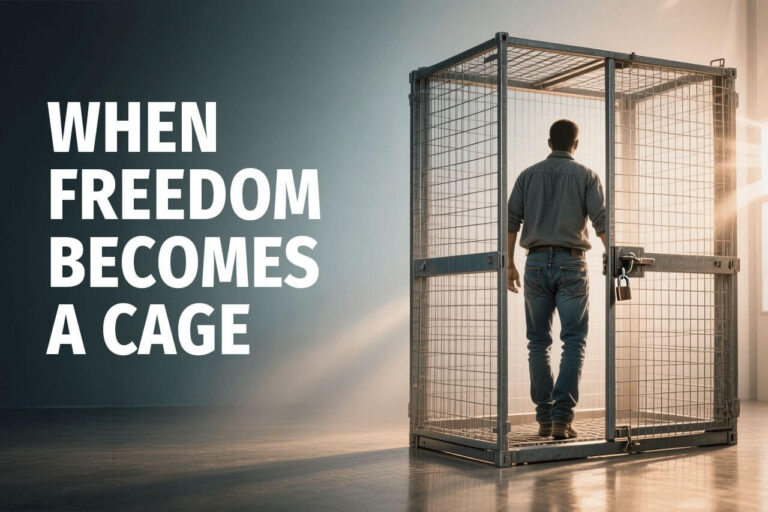Getting Off the Truck, Part VI
While learning to lead a team of highly skilled people is something a business owner starts developing early in their career, it usually doesn’t come into full bloom until later when the company is larger. This is when the people in the business ideally have talents greater than the owner’s in specific areas.
An owner’s job is to create an environment that magnifies the talents of their people and harmonizes them with the talents of the others on the team. To be successful, they must fully commit, because this is when others will be empowered to actually DRIVE the truck. While this may sound simple enough in principle, it’s the owner’s execution that often falls short, as this is a difficult truck for them to exit.
During this time is when an owner’s job changes. Unlike the prior trucks they were driving, there are few to no physical work products for them to point to as an accomplishment. Instead, keeping all the trucks running with advice and nuanced correction becomes their primary skill.
Some time ago I was having a conversation with a business owner who was struggling with what he should be focused on in his company. He’d worked hard and built a successful business with lots of employees, healthy profits and cash flow, and a good reputation within his industry. But now, several decades into the business, he was feeling a bit lost.
Over the years he had personally performed almost every job in the company as he got off one truck after another. Those exhausting but rewarding early years when he WAS the business were now long past. Instead, he was looking ahead to when he would eventually exit the business and was confused about his role in a company that was no longer dependent on him to be the one unlocking the door every morning.
He was struggling with a challenge many business owners face as their company grows: “What should I be doing now to support the business? What role should I be playing, and how should I be using my time on the job?”
To help answer these questions, Chris relates another story from his youth about how his grandpa would interact with grandkids who were seeking his approval. According to them, grandpa was a wealth of knowledge and knew everything!
During hot Texas summers, grandpa would often sit outside under the carport with his pearl-snap shirt half unbuttoned, denim jeans, cowboy boots, and a pipe with sweet tobacco smoke wafting up from it.
The grandkids would congregate under the carport, bringing whatever mechanical project they had found to “fix,” knowing that they could seek advice from grandpa if they needed to.
Grandpa wanted them to learn how to do things for themselves, so he let them make mistakes. The mistakes he would watch them make were low cost, leading to scuffed knuckles, a stripped screw, or a piece to mend. This wasn’t without guidance or wisdom, as you would often hear his low and gravelly, “Hmm, you’re going to do it that way?” followed by a chorus from the grandkids of all the reasons why it was a good idea. His experience told him that what they were doing wouldn’t work, but he would let them fail so they could learn and build their confidence.
Chuck relates a similar story of when the operations manager for one of his clients stated, “Of course I let people make mistakes. After all, what decisions can they make that will actually threaten the existence of the company?” (And this was with heavy equipment!)
Leaders in business will fail at their tasks, sometimes in ways that an owner didn’t think were possible. Where the stakes are low, it’s best to let them scrape their knuckles or break something they then must fix. An owner’s job is to give guidance where they allow for it, pick them up when they fall, and let them know that the fall wasn’t that bad after all.
In many ways getting off this last truck has as much to do with making the mental shift from doing things to leading people as it does with simply learning to do new things. This is no small task for an owner who’s grown accustomed to calling the shots and controlling everything around them. It’s important for them to understand that the skills needed to get off their first truck aren’t the same as those needed to get off a larger one.
The rub comes in when an owner wants to grow a larger company or is currently running a larger one that demands leadership skills and all they have to offer are ownership skills. The owner must decide if they want to enter this new “leadership truck” and develop the expertise needed to lead a larger organization or whether they want to stay where they are. Neither is wrong, it’s simply a choice.
This change can involve things as basic as shifting from making decisions and giving orders to soliciting people’s opinions before making those decisions.
It can mean shifting the overall focus of the business from the owner to the team they’ve built to run it or to the communities that have supported them and the company throughout its growth. Or it can involve what Chris mentioned in Part I of this series—an owner making the transition from being on their first truck, to coaching the person who’s now driving that truck, to being a guide for that coach.



